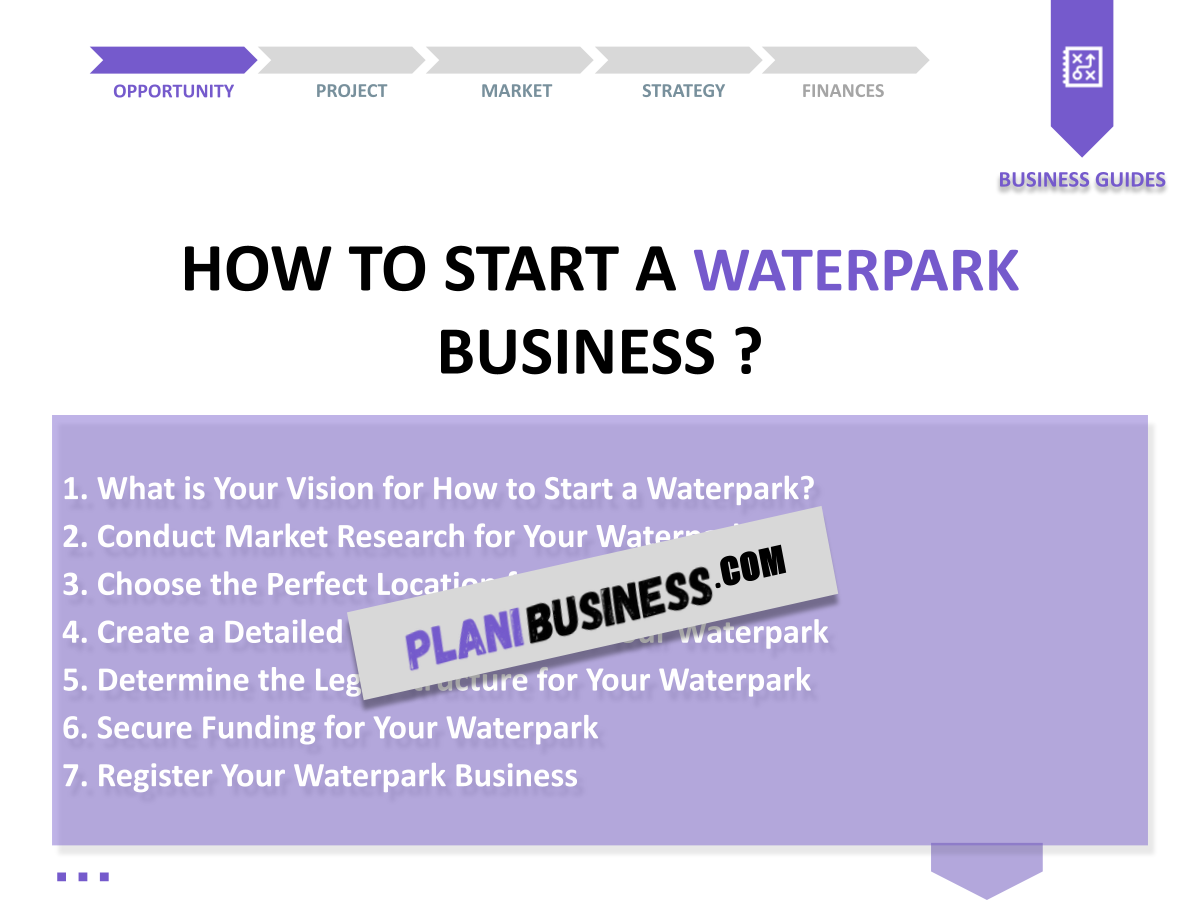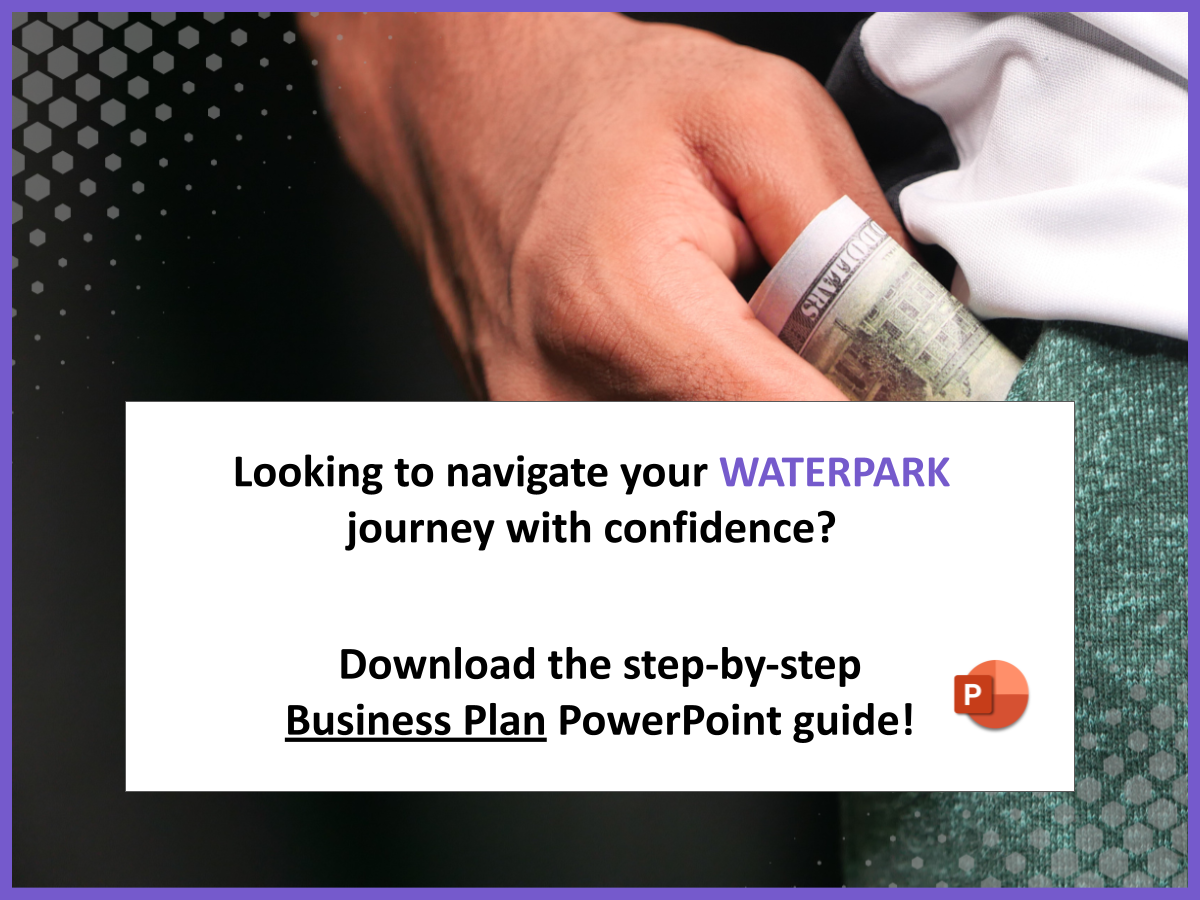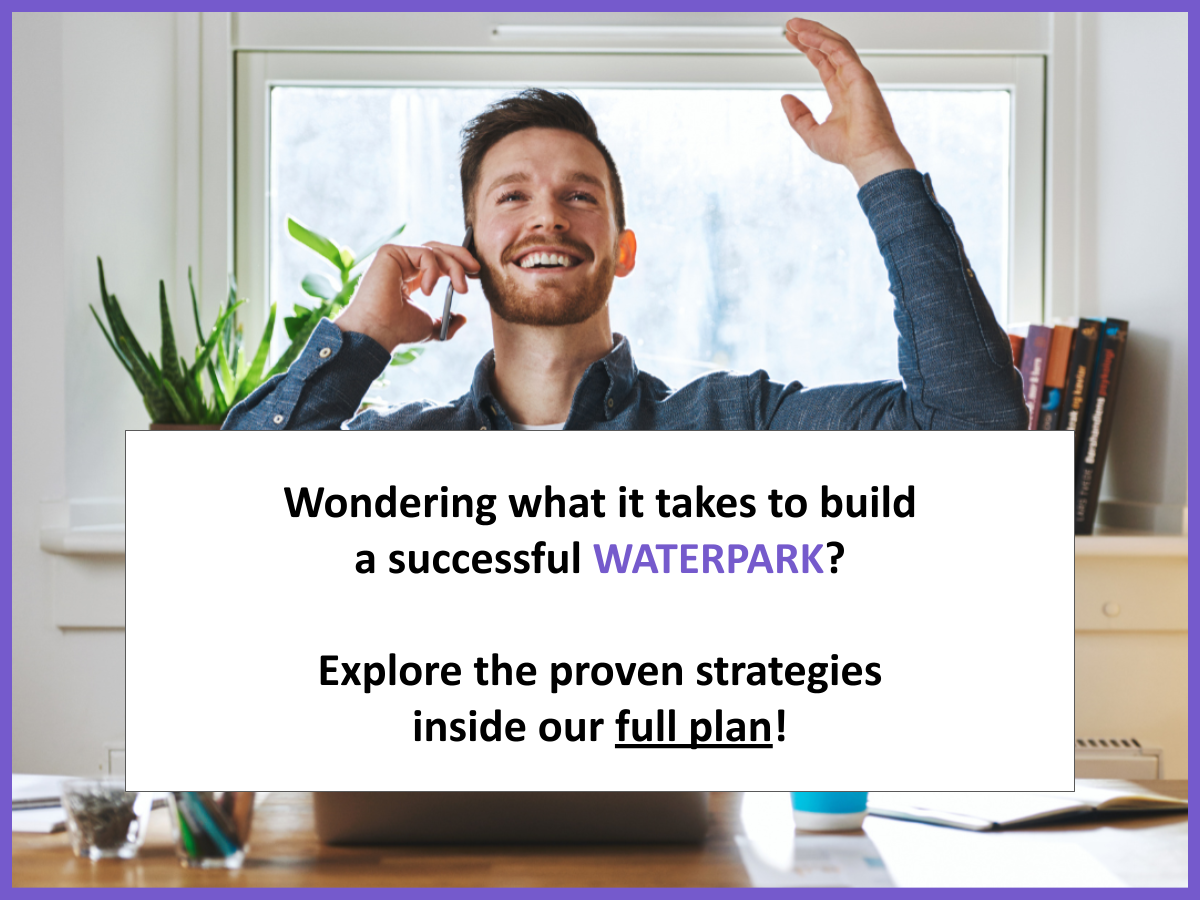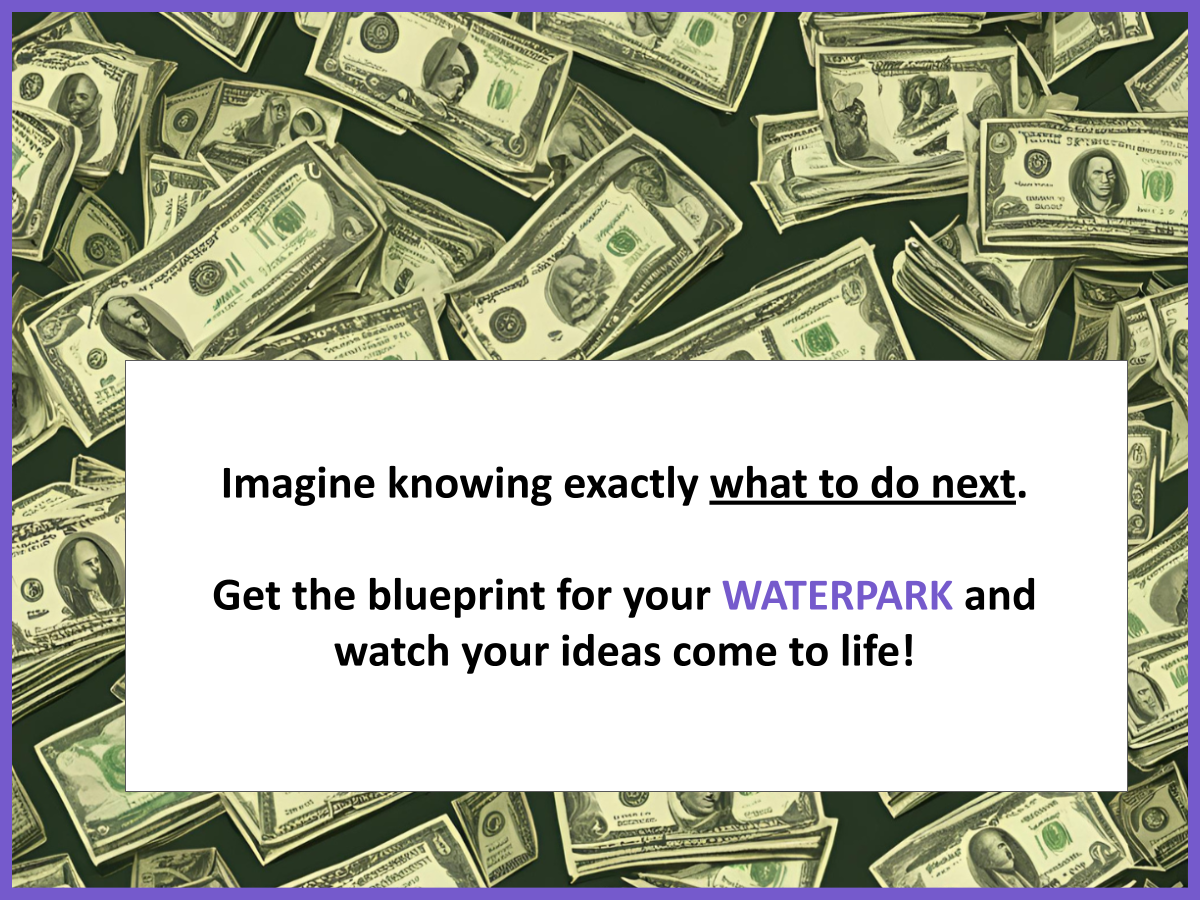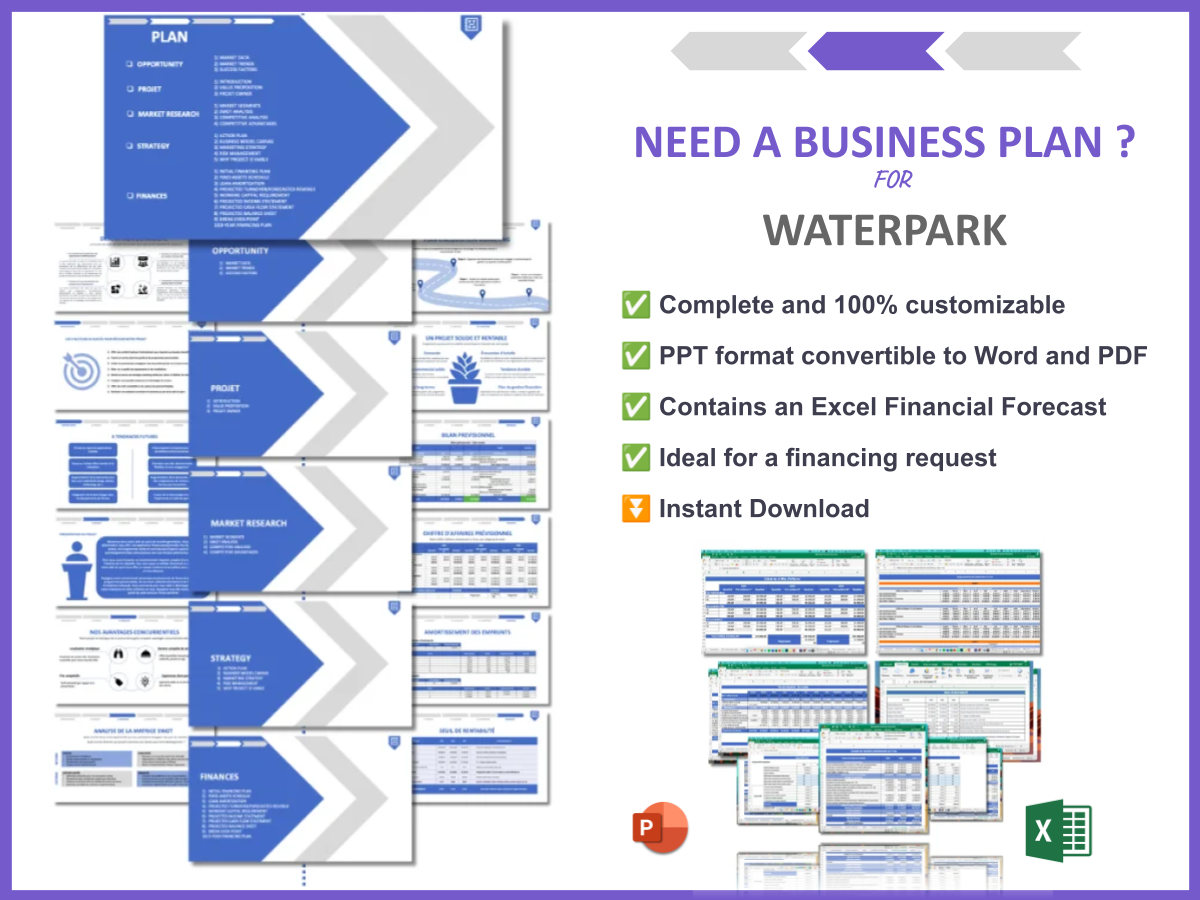Are you considering launching a new venture that promises fun and excitement? If so, you’re not alone! The waterpark industry has seen a surge in popularity over the years, with families seeking thrilling attractions and relaxing environments. In fact, the global waterpark market is projected to grow at an impressive rate of over 9% annually. So, how do you dive into this refreshing business? This guide will walk you through the essential steps on how to start a waterpark.
- Define your vision and concept.
- Conduct thorough market research.
- Select the ideal location.
- Create a detailed business plan.
- Secure necessary funding.
- Register your business and obtain licenses.
1. What is Your Vision for How to Start a Waterpark?
Before you jump into the logistics of how to start a waterpark, it’s crucial to have a clear vision of what you want to achieve. A well-defined vision will guide your decisions and help you stand out in a competitive market. Ask yourself:
- What type of atmosphere do I want to create? (e.g., family-friendly, thrill-seeking, eco-conscious)
- What unique attractions or features will set my waterpark apart?
- Who is my target audience? (e.g., families, teens, tourists)
Consider these aspects carefully. Your vision will serve as the foundation for your entire project, influencing everything from design to marketing.
2. Conduct Market Research for Your Waterpark
Understanding the market landscape is essential when determining how to start a waterpark. This involves a multi-faceted approach to gather insights that will inform your business decisions. Here’s how you can conduct effective market research:
| Research Type | Description |
|---|---|
| Competitor Analysis | Identify existing waterparks in your area and analyze their strengths and weaknesses. Look at their attractions, pricing, and customer feedback. |
| Market Demand | Gauge interest in a new waterpark through surveys, focus groups, or community forums. This will help you understand potential attendance and revenue. |
| Target Audience | Define who your primary customers will be. Are you targeting families with young children, thrill-seekers, or a combination of both? |
By gathering this information, you can make informed decisions about your waterpark’s concept, attractions, and marketing strategies. Remember, the more you know about your market, the better equipped you’ll be to create a successful business.
3. Choose the Perfect Location for Your Waterpark
Finding the right location is critical when figuring out how to start a waterpark. The ideal site should not only attract visitors but also provide the necessary space for your attractions. Here are some key factors to consider:
- Accessibility: Ensure that the location is easily reachable by major roads and public transportation.
- Proximity to Attractions: Being near hotels, restaurants, or other tourist destinations can increase foot traffic.
- Local Population: Consider areas with a high population density and families, as they will be your main customers.
Conducting a thorough site analysis can help you identify potential locations. You might even want to visit similar parks in the area to see what works and what doesn’t.
| Criteria | Importance | Considerations |
|---|---|---|
| Land Size | High | Ensure enough space for attractions, parking, and amenities. |
| Zoning Regulations | High | Confirm that the land can be used for commercial recreational purposes. |
| Environmental Factors | Medium | Assess water availability and natural landscapes for landscaping. |
Choosing the right location can make or break your waterpark venture, so take your time and weigh your options carefully.
4. Create a Detailed Business Plan for Your Waterpark
A comprehensive business plan is your roadmap for success. It outlines your vision, strategy, and financial projections, making it a vital step in how to start a waterpark. Here’s what to include:
- Executive Summary: A snapshot of your business, including your mission and vision.
- Market Analysis: Insights from your market research, including competition and target audience.
- Marketing Strategy: How you plan to attract and retain customers, including pricing and promotions.
- Financial Projections: Detailed forecasts of revenues, expenses, and profitability over the next few years.
Having a solid business plan will not only guide you through the initial stages but also attract potential investors. I recommend checking out this business plan template for Waterpark. It’s super detailed and can save you a ton of time!
Creating a business plan can feel daunting, but breaking it down into sections makes it manageable. Each section will help clarify your thoughts and prepare you for the challenges ahead.
5. Determine the Legal Structure for Your Waterpark
Choosing the right legal structure is a crucial step in how to start a waterpark. Your choice will impact your taxes, liability, and business operations. Here are the common structures you might consider:
- Sole Proprietorship: Simple and easy to set up, but you bear all the risks.
- Partnership: Ideal if you have a business partner, sharing profits and responsibilities.
- Corporation: Offers liability protection but comes with more regulations and tax obligations.
Before deciding, it’s wise to consult with a legal expert or accountant to weigh the pros and cons of each structure. They can provide tailored advice based on your specific situation and long-term goals.
6. Secure Funding for Your Waterpark
Funding is often one of the most challenging aspects of how to start a waterpark. Depending on the scale of your project, you may need substantial financial resources. Here are several options to consider:
| Funding Source | Advantages | Disadvantages |
|---|---|---|
| Bank Loans | Structured repayment plans and potentially lower interest rates. | Requires good credit and collateral. |
| Private Investors | Access to larger sums of money and potential business expertise. | May require giving up some control over your business. |
| Grants and Subsidies | Free money that doesn’t need to be repaid. | Highly competitive and often requires detailed proposals. |
Having a solid business plan can significantly enhance your chances of securing funding. Make sure to clearly outline how the funds will be used and the projected return on investment. Don’t hesitate to network and seek out funding opportunities in your community or industry.
Finding the right funding can be a game-changer for your waterpark project, so explore multiple avenues and remain persistent in your efforts.
7. Register Your Waterpark Business
Once you have your vision, location, and funding in place, it’s time to make your waterpark official. Registering your business is a key step in how to start a waterpark. Here’s what you need to do:
- Choose a Business Name: Pick a name that reflects your waterpark’s theme and is easy to remember. Make sure it’s not already in use by checking local business registries.
- File the Necessary Paperwork: Depending on your legal structure, you may need to file different forms. This could include Articles of Incorporation for a corporation or a DBA (Doing Business As) for a sole proprietorship.
- Get an Employer Identification Number (EIN): This is required for tax purposes and is essential if you plan to hire employees.
Registering your business not only makes it official but also establishes your brand identity in the marketplace. It’s a crucial step in laying the groundwork for your waterpark’s success.
8. Obtain Licenses and Permits for Your Waterpark
Before you can open your doors, you’ll need to secure various licenses and permits. This step is vital in ensuring that your waterpark operates legally and safely. Here are some common licenses and permits you may need:
- Business License: Required by most local governments to operate legally.
- Health and Safety Permits: These ensure that your waterpark meets safety regulations, particularly concerning water quality and attraction safety.
- Construction Permits: If you’re building new structures, you’ll need permits from local zoning authorities.
It’s crucial to check with your local government and regulatory bodies to ensure you have all necessary documentation. The requirements can vary significantly based on your location and the specific attractions you plan to offer.
Obtaining the right licenses and permits is a time-consuming process, but it’s essential for ensuring the safety of your guests and the long-term success of your waterpark.
9. Insure Your Waterpark Business
Insurance is a critical component when determining how to start a waterpark. The waterpark industry involves inherent risks, from slips and falls to equipment failures. Here’s what you should consider:
- General Liability Insurance: This covers injuries and accidents that may occur on your property.
- Property Insurance: Protects your physical assets, including buildings and equipment, against damage or theft.
- Workers’ Compensation Insurance: Essential if you plan to hire staff, this covers medical costs and lost wages for employees injured on the job.
It’s advisable to consult with an insurance agent who specializes in the amusement or recreation industry. They can help you assess your specific needs and ensure you have comprehensive coverage.
| Type of Insurance | Coverage |
|---|---|
| General Liability | Covers third-party injuries and property damage. |
| Property Insurance | Protects your buildings and equipment from risks like fire and theft. |
| Workers’ Compensation | Covers employee injuries and associated medical costs. |
Having the right insurance not only protects your investment but also gives peace of mind, allowing you to focus on creating an amazing experience for your guests.
10. Develop a Marketing Strategy for Your Waterpark
Once you’re set up, it’s time to attract visitors! A well-thought-out marketing strategy is essential for how to start a waterpark. Here’s how you can effectively market your new venture:
- Leverage Social Media: Create profiles on platforms like Instagram and Facebook to showcase attractions, events, and special promotions. Engaging content can help build a community around your waterpark.
- Local Advertising: Consider traditional methods like flyers, local newspapers, and radio ads to reach nearby residents and tourists.
- Partnerships: Collaborate with local hotels, restaurants, and travel agencies to offer package deals or cross-promotions.
Utilizing a mix of marketing channels can maximize your reach. Special promotions, like discounted tickets on opening day or family packages, can also draw in crowds.
Remember, building a strong brand and maintaining a positive reputation through excellent customer service is just as important as your marketing efforts. Happy customers will spread the word, bringing in more visitors over time!
11. Design Your Waterpark Layout
Creating an engaging and functional layout is a vital step in how to start a waterpark. The design should ensure a smooth flow of guests while maximizing space for attractions and amenities. Here are some key considerations:
- Attraction Placement: Position popular attractions near the entrance to draw guests in, while placing quieter areas further back.
- Safety and Accessibility: Ensure that pathways are wide enough for crowds and that all areas are accessible to individuals with disabilities.
- Food and Beverage Locations: Strategically place dining options to keep guests refreshed without disrupting the flow of traffic.
A well-planned layout not only enhances the guest experience but also improves operational efficiency. Here’s a basic example of a potential layout:
| Zone | Description |
|---|---|
| Entrance Area | Welcome center with ticketing and information. |
| Attraction Zone | Includes water slides, wave pools, and kiddie areas. |
| Food Court | Diverse dining options with seating areas. |
Investing in a professional design service can help you create a layout that not only looks good but is also practical for day-to-day operations.
12. Assemble Your Team for the Waterpark
Building a capable and enthusiastic team is essential when considering how to start a waterpark. Your staff will play a crucial role in providing excellent customer service and ensuring safety. Here’s how to approach hiring:
- Identify Key Positions: Roles may include lifeguards, maintenance staff, customer service representatives, and marketing professionals.
- Focus on Training: Develop a comprehensive training program that emphasizes safety protocols, customer service skills, and operational procedures.
- Encourage Team Spirit: Foster a positive work environment to motivate employees and improve retention rates.
Hiring the right people can make a significant difference in the overall atmosphere of your waterpark. Consider conducting team-building exercises to strengthen camaraderie and improve communication among staff.
13. Plan for Opening Day and Beyond
Your opening day is a major milestone in your journey of how to start a waterpark. It’s your chance to make a lasting impression on guests! Here are some tips for a successful launch:
- Host a Grand Opening Event: Plan special activities, discounts, and promotions to attract a large crowd.
- Gather Customer Feedback: Use surveys or informal conversations to gauge guest satisfaction and areas for improvement.
- Continuously Innovate: Keep the excitement alive by introducing new attractions, seasonal events, and special promotions throughout the year.
After the opening, focus on maintaining high standards of safety and customer service. Happy visitors are more likely to return and recommend your waterpark to others. Remember, the journey doesn’t end at the opening; it’s just the beginning of a new adventure!
By following these steps, you can successfully navigate the complexities of launching your own waterpark and create a destination that brings joy and excitement to families for years to come.
Conclusion
Starting a waterpark is an exciting venture that promises fun, thrills, and a chance to create lasting memories for families. By following the steps outlined in this guide, from developing your vision to planning your grand opening, you can set the foundation for a successful business. Remember, thorough research, a solid business plan, and a dedicated team are your keys to success in the waterpark industry.
As you embark on this journey, consider exploring additional resources to further enhance your planning process. For instance, check out our article on how to create a SWOT Analysis for Waterpark to identify strengths, weaknesses, opportunities, and threats specific to your project. Additionally, our guide on How to Formulate a Waterpark Marketing Plan? With Example can provide you with effective strategies to attract visitors and boost your brand.
With passion and perseverance, you can create a waterpark that not only entertains but also stands out in a competitive market. Dive in, and enjoy the ride!
FAQ
- What are the initial steps in how to start a waterpark?
Begin by defining your vision and conducting market research to understand your target audience and competitors. - How much does it cost to build a waterpark?
The cost can vary widely depending on the size and features of the park, ranging from hundreds of thousands to millions of dollars. - What type of attractions should I include in my waterpark?
Consider a mix of thrill rides, family-friendly areas, and relaxation zones, such as lazy rivers and wave pools. - How do I choose a location for my waterpark?
Look for areas with high foot traffic, accessibility, and proximity to tourist attractions or densely populated neighborhoods. - What permits do I need to operate a waterpark?
You’ll need a business license, health and safety permits, and construction permits, among others, depending on your location. - How can I finance my waterpark?
Explore options such as bank loans, private investors, grants, and crowdfunding to secure the necessary funds. - What marketing strategies work best for waterparks?
Utilize social media, local advertising, and partnerships with hotels and travel agencies to attract visitors. - What kind of insurance do I need for a waterpark?
General liability, property, and workers’ compensation insurance are crucial for protecting your business and employees. - How important is staff training in a waterpark?
Training is essential for ensuring safety and providing excellent customer service, which is key to visitor satisfaction. - How can I keep my waterpark relevant after opening?
Continuously innovate by adding new attractions, hosting events, and gathering customer feedback to improve the guest experience.

